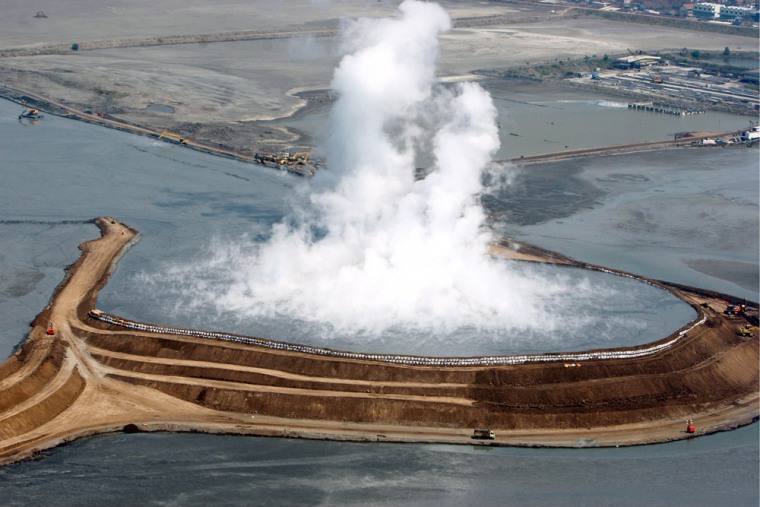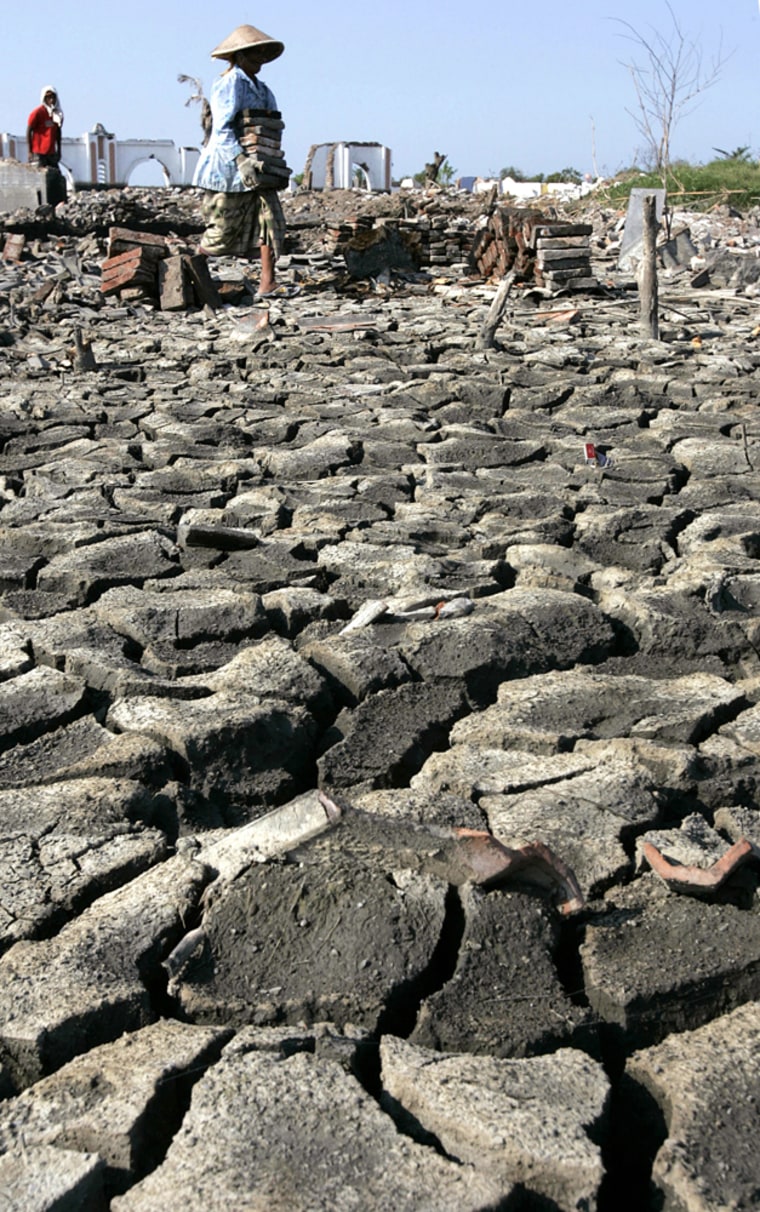International scientists say they are almost certain a mud volcano that displaced tens of thousands of villagers in central Indonesia was caused by faulty drilling of a gas exploration well — not an earthquake as claimed by the company.
Debate over the eruption has flared since a seemingly endless torrent of hot, black sludge started oozing from a gaping hole near the country's second-largest city of Surabaya on May 29, 2006.
Well operator Lapindo Brantas, owned by the family of Indonesia's richest man, Welfare Minister Aburizal Bakrie, says it was triggered by a magnitude 6.3 earthquake that occurred 250 kilometers (155 miles) from the site two days earlier.
"We are more certain than ever that the Lusi mud volcano is an unnatural disaster and was triggered by drilling the Banjar-Panji-1 well," Richard Davies, a geologist at Durham University in Britain, said Tuesday.
He was the lead author of a study published this week in the academic journal Earth and Planetary Science Letters that said his team was 99 percent sure that drilling pressures caused a fluid leakage that led to an "underground blowout."
Lapindo noticed too late that an influx of water or gas entered the well after the drill was removed for the night, Davies said, adding "it is quite clear" the critical pressure was "more than the hole could withstand."
Michael Manga, a University of California researcher who authored the part of the report on the quake's impact, said while earthquakes can trigger eruptions, this one "was simply too small and too far away."
'Ready for a scientific debate'
Lapindo responded by saying Davies and his team were not experts on drilling, rock mechanics or mud volcanoes.

"We are ready for a scientific debate," said company spokeswoman Yuniwati Teryana, adding that some other international experts support claims the eruption was triggered by tectonic activities.
The government has made many attempts to contain or stop the mud, which is coming out at a rate of up to 3.5 million cubic feet (100,000 cubic meters) a day, including dropping beach ball-sized concrete balls into its mouth and building dams to channel the sludge to sea.
But it continues to wreak havoc, swallowing at least a dozen villages and displacing up to 30,000 people. The government estimates the eruption will cause US$844 million in damage and has ordered Lapindo to pay half that, with some of the money going toward compensating victims.
